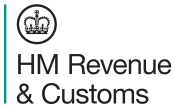Paying dividends to close family members: Tax traps
In a family company scenario, it can be tax-efficient to make salary and dividend payments to family members to utilise their unused allowances and lower-rate tax bands.
However, when it comes to paying dividends, there are potential tax traps to avoid.
Why pay dividends?
Dividends are a distribution of profits made to shareholders. Paying dividends rather than additional salary or a bonus can be advantageous from a tax perspective.
The first advantage is the dividend allowance, which is available in addition to the personal allowance to all taxpayers, regardless of the rate at which they pay tax. Unlike the personal allowance, it is not lost once income exceeds £125,140 or reduced once income exceeds £100,000.
The dividend allowance is set at £1,000 for 2023/24 (reduced from £2,000 for 2022/23). It is to be further reduced to £500 from 6 April 2024. Dividends sheltered by the allowance are taxed at a zero rate. However, they use up part of the tax band into which they fall.
The second advantage of paying dividends is that the dividend rates of tax are lower than the income tax rates. To the extent that dividends are not sheltered by the personal allowance or the dividend allowance, they are taxed at the rate of 8.75% where they fall in the basic rate band, at the rate of 33.75% where they fall in the higher rate band and at 39.35% where they fall in the additional rate band.
It should be remembered that as dividends are paid from post-tax profits, corporation tax has already been paid.
However, there are some constraints on paying dividends.
Trap 1: Need for sufficient retained profits
A family company cannot simply decide to pay dividends to family members without taking into account the company law requirements that must be met. Dividends are a distribution of profits and are paid from retained profits. Consequently, they can only be paid if the company has sufficient retained profits from which to pay the proposed dividend.
The key figure is total retained profits, not the profits for a particular year or accounting period. Thus, a company can still pay a dividend for a year in which it makes a loss as long as it has sufficient retained profits accumulated in previous years available from which to pay that dividend.
From 1 April 2023, the rate at which a company pays corporation tax depends on the level of its profits, with tax rates ranging from 19% to 25%. Where a company pays corporation tax at a higher rate than previously, the amount retained for each pound of pre-tax profit will be lower. This means that a company whose pre-tax profits remain at broadly the same level may not be able to maintain dividends at the same level as previously. Before paying dividends, check that retained profits are sufficient.
Trap 2: Dividends must be paid in proportion to the shareholdings
Dividends can only be paid to shareholders, so for a family member to receive a dividend, they must be a shareholder. Unlike a salary or bonus payment, the company does not have complete flexibility to set the amount of the dividend to be paid to each family member; to comply with company law, dividends must be paid to all shareholders with the same class of share in proportion to their shareholding. For example, in a family company, if 60% of the ordinary shares are owned by the wife and the remaining 40% by her husband, the wife must receive 60% of the total dividend paid to the ordinary shareholder and the husband 40%.
This will not always be the best split from a tax perspective. The problem can be overcome using an ‘alphabet’ share structure under which each shareholder has a different class of share. This provides the flexibility to declare different dividends for each class of share or to declare a dividend for one class of share but not another.
It is preferable to set the share structure at the outset, allocating a separate class of shares to each family member. This avoids the need to create new classes of shares at a later date and potential problems under the settlement rules.
Trap 3: Dangers of dividend waivers
- the shareholder making the waiver wishes to benefit another shareholder; or
- the shareholder who has not waived their dividend pays less tax on the dividend than would be paid by the shareholder waiving the dividend, particularly where there is a history of dividend waivers.
HMRC are also more likely to attack arrangements between spouses. Consequently, dividend waivers should be used with caution.
Trap 4: Beware the ‘settlements’ provisions
The ‘settlements’ provisions are anti-avoidance legislation, intended to prevent an individual from gaining a tax advantage from arrangements that divert income to another person who is liable to tax at a lower rate or who is not liable to tax at all.
For the legislation to apply, the settlement must include an element of bounty. ‘Bounty’ is the provision of value without any corresponding quid pro quo. This will be the case where a gift is made or there is a transfer at below full value without the transferee receiving anything in return.
HMRC sought to apply the settlements legislation in the well-known Artic Systems case in which the husband (Mr Jones) earned the company’s income and, after paying a small salary, distributed the profits as dividends, which were received equally by Mr Jones and his wife. While the courts agreed that there was an element of bounty, the Joneses were able to benefit from the exemption that excludes outright gifts between spouses from the scope of the settlements legislation where the gift does not represent the entire or a substantial right to income. The shares had other rights attached to them, such as voting rights and the right to capital in the event of a winding-up.
When taking advantage of the no gain/no loss rules to transfer shares to a spouse, it is sensible to ensure that the shares have other rights in addition to a right to dividends to preserve the exemption and avoid falling foul of the settlement legislation.
Trap 5: Capital gains tax on gifts of shares to children
If shares are gifted to adult children to enable them to benefit from company dividends, the disposal is one between connected persons and will trigger a possible capital gains tax bill based on the market value of the shares.
However, it is possible to elect for the gain to be held over if the company is a qualifying trading entity, delaying the tax charge until the shares are disposed of by the recipient.
Practical Tip
While it can be tax-efficient to pay dividends to family members, it is important that steps are taken up front to prevent falling foul of the traps outlined above.






